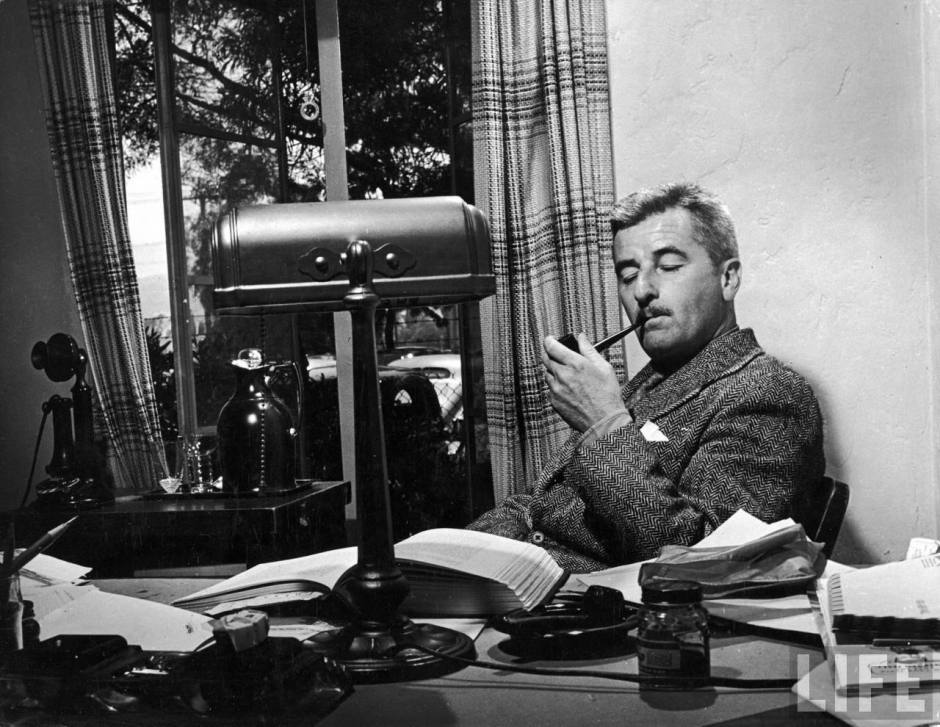Jefferson, a town in Yoknapatawpha county, looms large in the novels of William Faulkner, a great Southern writer and a Mississippian. Jefferson, in fact, is modelled after the real town of Oxford, the home of the University of Mississippi, or Ole Miss, while fictional Yoknapatawpha county stands in for Lafayette county.

Faulkner, a Nobel Prize laureate and a National Book Award winner whose works are set in his native state, was born in nearby New Albany in 1897 and moved to Oxford with his family when he was four years old.
After dropping out of Ole Miss in 1920, he turned to serious writing, publishing a succession of novels and short stories. Novels such as The Sound and the Fury and Light in August and short stories ranging from These 13 to A Rose for Emily solidified his reputation as a master of his craft.
Although he travelled widely, Faulkner maintained his residence in Oxford, which is about an hour’s drive from Memphis, where the rock legend Elvis Presley lived. In 1930, Faulkner bought Rowan Oak, an antebellum house set on a densely wooded property, and resided there until his death on July 6, 1962.
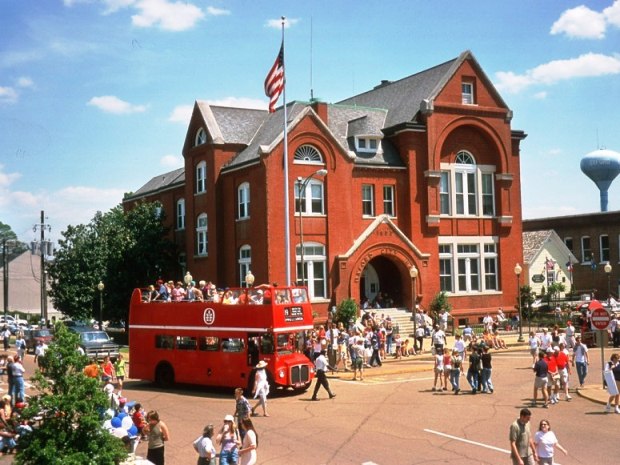
A picturesque town distinguished by antebellum buildings in the Northern Preservation District, Oxford is built around a scenic square and named after the British university town. It’s also the home of best-selling author John Grisham, a graduate of Ole Miss.
Much to its chagrin, Oxford gained instant notoriety during the civil rights era in the 1960s, when the state governor, Ross Barnett, and Ole Miss officials tried in vain to prevent James Meredith, an African-American, from integrating the staunchly segregated institution.
The confrontation pitting the forces of progress against reaction took place at the university’s administrative building, the Lyceum, which now faces a statue of Meredith striding forward purposefully. Faulkner, who died on the eve of the university’s federally enforced desegregation, drew on Oxford for inspiration.
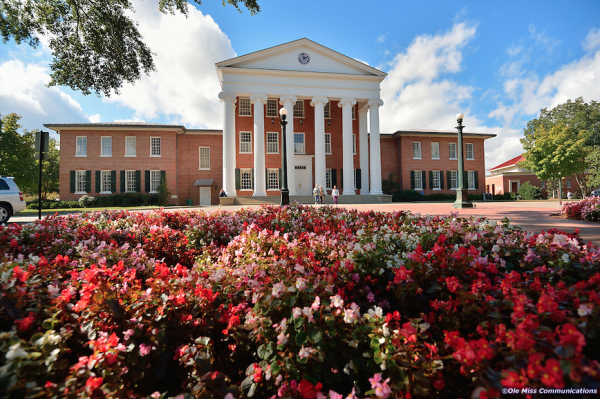
Oxford’s stately, white-washed, 19th-century Lafayette county courthouse, which has been designated as a National Historic Landmark, figures in one of his novels, Requiem for a Nun. Finished in 1873 and refurbished in 1981, it’s a stunningly magnificent building.
On its southern side is a tall limestone statue that honors fallen Confederate soldiers. An inscription reads, “They gave their lives in a just and holy cause.” The statue was erected in 1907, just 17 years after Mississippi enacted a constitution that virtually disenfranchised African-Americans and established the Magnolia state as a hardcore bastion of Jim Crow discriminatory laws.
Mississippi, alternately claimed by France, Spain and Britain before joining the United States as its 20th state in 1817, was always a redoubt of the deep South. Having seceded from the Union in 1861 in hopes of preserving its slave-based economy, based mainly on the cultivation of cotton on plantations, Mississippi was a battlefield during the four-year Civil War. Indeed, Oxford was virtually burned to the ground by federal troops in 1864.
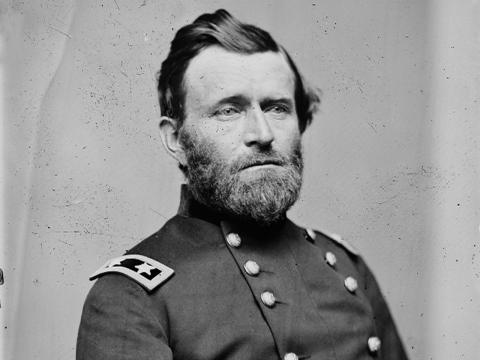
A year into that extremely bloody conflict, Ulysses S. Grant, a Union general and a future American president, wrote one of the most infamous orders in U.S. history from his base in Oxford. After president Abraham Lincoln prohibited commerce with the Confederacy, Union generals were charged with the responsibility of enforcing the edict.
With some traders and merchants having flouted Lincoln’s edict, Grant issued Order No. 11 on Dec. 17, 1862, in which he singled out Jews as the main culprits and expelled them from his military department in the region. Shortly afterward, due to Jewish protests, Lincoln rescinded the unprecedented order.
To a visitor seeking out places in Oxford associated with Faulkner, the county courthouse is not the only destination of choice.
A statue of Faulkner holding a smoking pipe can be found near the J.E. Neilson department store — supposedly the oldest such emporium in the South — and Square Books, one of the finest independent book stores in the country.
You can also stop at Duval House — where he wrote Sanctuary and several short stories and where he lived after his first marriage — and at Faulkner’s childhood home on Lincoln Avenue.
Faulkner’s 1948 novel, Intruder in the Dust, was made into a Hollywood film, and was partially shot on the first and second floors of a local building, Jennie’s Hallmark.
The J.D. Williams Library on the campus of Ole Miss contains Faulkner’s collection of books and manuscripts and his Nobel Prize, which he won in 1949.
The university’s post office, Fraser Hall, is where Faulkner worked as a clerk starting in 1921. He hated the job. “I refuse to place myself at the beck and call of every S.O.B. with the price of a two-cent stamp,” he is reputed to have said.
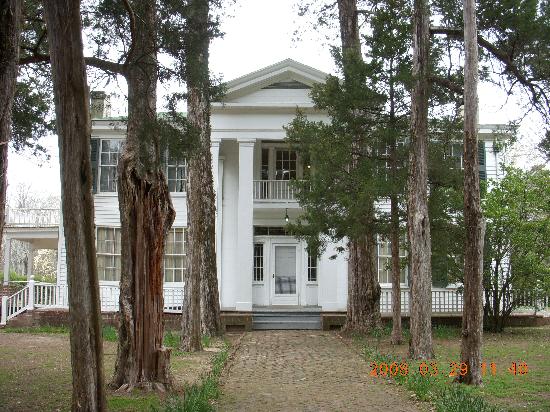
Rowan Oak, however, is the piece de resistance of any tour linked with Faulkner in Oxford. A Greek Revival building constructed in the 1840s by an Irish immigrant planter, and now the property of Ole Miss, Rowan Oak was purchased by Faulkner after his novel, As I Lay Dying, was published.
Faulkner named his residence after both the rowan tree, a symbol of peace and security, and the oak tree, which is emblematic of strength. “Rowan Oak was Faulkner’s private world, in reality and imagination,” an official publication says.
Approached by an imposing alley of high cedars, Rowan Oak is a simple dwelling in terms of its relatively muted architecture and plain furnishings.
The library contains shelves that Faulkner himself built and is graced with a painted portrait of the great man above a fireplace mantle. The parlour is dominated by French Provincial furniture and a grand piano. The dining room has a table with chairs and a china cabinet.
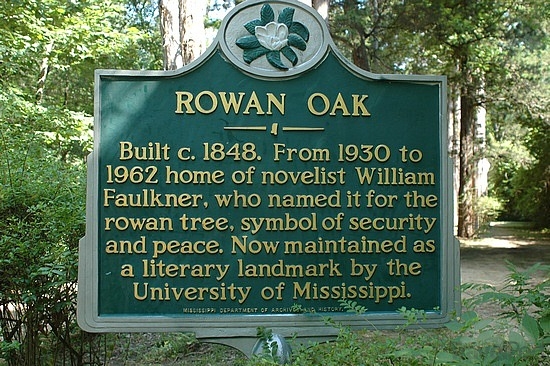
In Faulkner’s office, the plot outline of A Fable is written on the wall in his own hand. The pantry is where Faulkner received word that he had won the Nobel Prize. In the kitchen are a deep freezer, an electric oven and a refrigerator. Upstairs, on the second floor, are the mostly unadornerd bedrooms of Faulkner, his wife and children.
If you’re an admirer of great writers, Oxford is definitely the place to visit.
